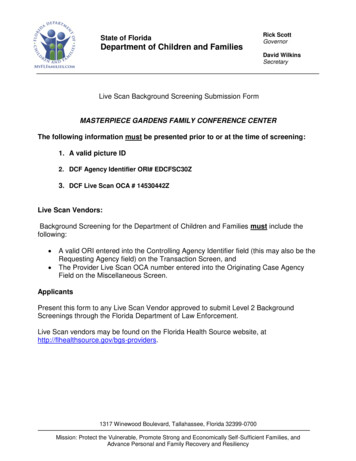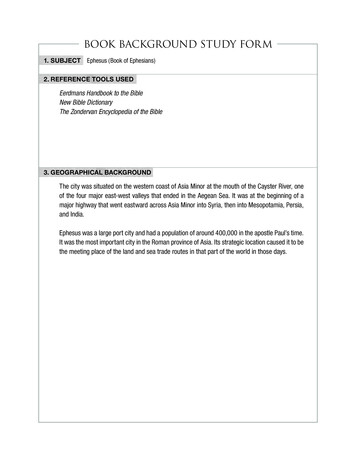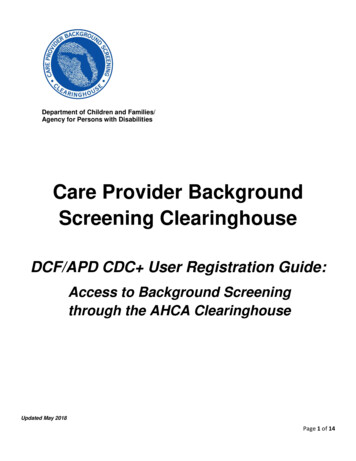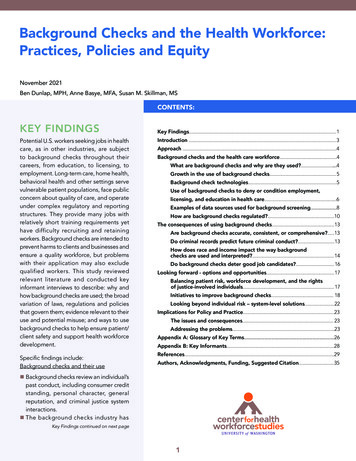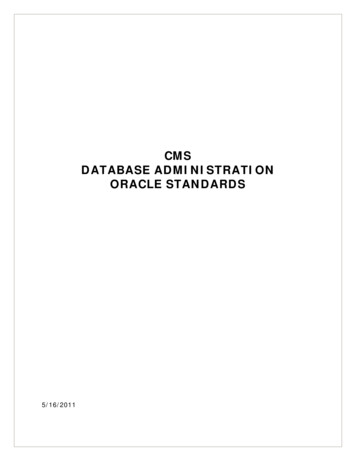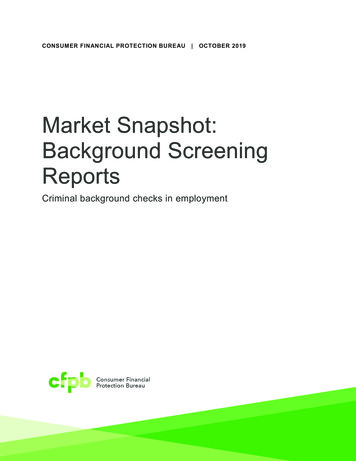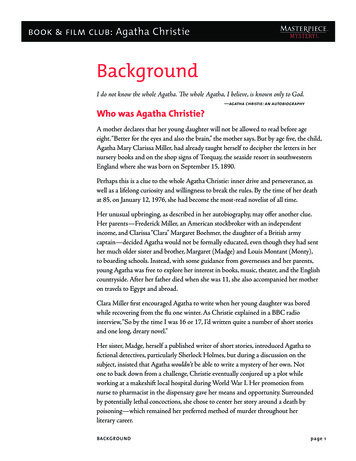
Transcription
book & film club: Agatha ChristieBackgroundI do not know the whole Agatha. The whole Agatha, I believe, is known only to God.—agatha christie: an autobiographyWho was Agatha Christie?A mother declares that her young daughter will not be allowed to read before ageeight. “Better for the eyes and also the brain,” the mother says. But by age five, the child,Agatha Mary Clarissa Miller, had already taught herself to decipher the letters in hernursery books and on the shop signs of Torquay, the seaside resort in southwesternEngland where she was born on September 15, 1890.Perhaps this is a clue to the whole Agatha Christie: inner drive and perseverance, aswell as a lifelong curiosity and willingness to break the rules. By the time of her deathat 85, on January 12, 1976, she had become the most-read novelist of all time.Her unusual upbringing, as described in her autobiography, may offer another clue.Her parents—Frederick Miller, an American stockbroker with an independentincome, and Clarissa “Clara” Margaret Boehmer, the daughter of a British armycaptain—decided Agatha would not be formally educated, even though they had senther much older sister and brother, Margaret (Madge) and Louis Montant (Monty),to boarding schools. Instead, with some guidance from governesses and her parents,young Agatha was free to explore her interest in books, music, theater, and the Englishcountryside. After her father died when she was 11, she also accompanied her motheron travels to Egypt and abroad.Clara Miller first encouraged Agatha to write when her young daughter was boredwhile recovering from the flu one winter. As Christie explained in a BBC radiointerview, “So by the time I was 16 or 17, I’d written quite a number of short storiesand one long, dreary novel.”Her sister, Madge, herself a published writer of short stories, introduced Agatha tofictional detectives, particularly Sherlock Holmes, but during a discussion on thesubject, insisted that Agatha wouldn’t be able to write a mystery of her own. Notone to back down from a challenge, Christie eventually conjured up a plot whileworking at a makeshift local hospital during World War I. Her promotion fromnurse to pharmacist in the dispensary gave her means and opportunity. Surroundedby potentially lethal concoctions, she chose to center her story around a death bypoisoning—which remained her preferred method of murder throughout herliterary career.B ACKG RO U N Dpage 1
book & film club: Agatha ChristieThough completed in 1916, this first whodunit, The Mysterious Affair at Styles, wasn’tpublished until four years later. The novel was a popular and critical success, thoughthe author’s favorite review appeared in The Pharmaceutical Journal: “Miss AgathaChristie knows her job.” Constructed with many of the elements that would laterbecome Christie trademarks, the book most notably gave the world the enduring andeccentric detective Hercule Poirot and his “little grey cells.”By then Agatha had wed Colonel Archibald Christie, an aviator in the Royal FlyingCorps and had one daughter, Rosalind. Her career as a novelist and short story writerwas well underway when, in 1926, her own life took a dramatic turn: Her belovedmother died; her first blockbuster, The Murder of Roger Ackroyd, was published; andArchie Christie announced, after 12 years of marriage, that he had fallen in love with ayounger woman. In early December, Agatha’s car was found in a ditch not far from herhome, the now-famous author’s whereabouts unknown. Her disappearance sparkedsuch a frenzied search by the public and the police that some thought the incidentwas a publicity stunt. Christie was eventually spotted in a Yorkshire spa, registered as“Mrs. Teresa Neele” (the surname of her husband’s mistress) from Cape Town, SouthAfrica. Christie herself never revealed what happened during that time, though somedetails have been offered in books such as Jared Cade’s Agatha Christie and the ElevenMissing Days and in the 1979 film Agatha, with Vanessa Redgrave in the title role.After her divorce from Colonel Christie in 1928, Agatha indulged one of herchildhood interests by visiting an archaeological dig in Iraq. On her second dig, shemet archaeologist Max Mallowan. He was 26 and she was 40 when they marriedin 1930. She often joined him on his expeditions and set some of her stories inthese more exotic locations. After Mallowan was knighted for his contribution toarchaeology in 1968, she became “Lady Christie.” She earned the title Dame when shewas named a Commander of the Order of the British Empire in 1971.B ACKG RO U N Dpage 2
book & film club: Agatha ChristieLiterary LegacyOver more than 50 years, Dame Agatha Christie published 66 detective novels and163 short stories, 19 plays, 2 autobiographical works, several books of poems andChristmas stories, and 6 romance novels (as “Mary Westmacott”). Translated into over45 languages, her books are estimated to have sold over 2 billion copies worldwide,eclipsed only by the Bible and the works of Shakespeare. And Then There Were None(1939) has been declared the world’s best-selling mystery ever, with 100 million copiessold and counting, and has been adapted into several plays, films, and a video game.Christie has admitted to taking inspiration from the detective fiction of Arthur ConanDoyle as well as the suspense writers of her day. That she influenced crime fictionwriters that came after her is indisputable. Suspects gather in the drawing room, thedetective questions them one by one, until (at last!) the identity of the murderer isrevealed . A denouement that now seems cliché was original with Christie’s firstpublished novel. She followed many of the conventions of crime writing of the time,but she also introduced unique criminals, crime fighters, and contrivances, givingus the Watson-like narrator as murderer, the policeman as perpetrator, the isolatedcrime scene, even a married detecting team pre–Nick and Nora Charles (Tommyand Tuppence Beresford, featured in the Masterpiece Mystery! Partners inCrime series). And Christie did it all without resorting to fake “untraceable” poisonsor pinning the death on a razor-wielding orangutan (as Edgar Allen Poe did in TheMurders in the Rue Morgue, considered to be the first detective story).Christie is also credited with creating the subgenre in mysteries known as the“cozy”—a quaint reference to the cloth or knitted cover of a proper English teapot tokeep it warm, implying a more refined mayhem in a small town or otherwise confinedsetting where everyone knows one another. But the crimes perpetrated in her storieswere hardly genteel. She had no qualms against permanently disposing of children,grannies, or clergypersons by poisoning, drowning, coshing (bludgeoning, that is),stabbing, garroting, electrocution, or the occasional gunshot.Of her 19 plays, The Mousetrap, first staged on November 25, 1952, is still thelongest continuously running play in theatrical history. Christie signed over the play’scopyright to her grandson, Mathew Prichard, as a gift for his tenth birthday.Beginning with a German adaptation of The Secret Adversary (Die Abenteur) in 1928,her work has also been adapted into more than 100 films. The British televisionproductions are some of the most popular broadcasts in Masterpiece Mystery!history. Miss Marple arrived in 1985, first portrayed by Joan Hickson, then GeraldineB ACKG RO U N Dpage 3
book & film club: Agatha ChristieMcEwan, and since 2009, Julia McKenzie. David Suchet has donned Poirot’s waxed,curlicue mustaches from the series’ beginning in 1989, and has voiced his wish to take“the world’s greatest detective” through all his cases.Christie’s Iconic SleuthsWith apologies to Audrey Hepburn and Jean-Claude Van Damme, Hercule Poirotmay well be the most famous Belgian on film. He is certainly one of the most belovedcharacters in fiction.Looking for a distinctive detective for her first novel, Christie thought of the Belgiansshe had encountered as a nurse during World War I, refugees who were taken in andresettled in the nearby parish of Tor. While tidying her own bedroom, she decidedher sleuth would also be meticulous and “very brainy—he should have little grey cells.”He would be a retired police inspector with a name grand for such a small man.So Hercule Poirot was born. In The Mysterious Affair at Styles, he is described as“hardly more than five feet four inches His head was exactly the shape of an egg His moustache was very stiff and military .” Not the stuff of a dashing hero, butPoirot charmed Christie’s publishers and the reading public.Christie later confessed to growing tired of her pompous creation, but her readersnever did. She obliged them in 33 novels and 54 short stories, including some of hermost acclaimed tales: The Murder of Roger Ackroyd, Murder on the Orient Express, andDeath on the Nile. After his final appearance in 1975’s Curtain, Hercule Poirot receiveda full-page obituary in The New York Times.Poirot pursues miscreants by “order and method.” His counterpoint, Miss Jane Marple,employs her intuition and her observations of human nature. Her testing ground is St.Mary’s Mead, the seemingly quiet and quintessentially English hamlet where she hasalways lived. But, as she explains, “There is a great deal of wickedness in village life.”“Miss Marple arose from the pleasure I had taken in portraying Dr. Sheppard’s sisterin The Murder of Roger Ackroyd,” Christie notes in her autobiography. “She had beenmy favourite character in the book—an acidulated spinster, full of curiosity, knowingeverything, hearing everything: the complete detective service in the home.” Anotherof Miss Marple’s traits was borrowed from Christie’s own maternal grandmother:“Though a cheerful person, she always expected the worst of everyone and everything,and was, with almost frightening accuracy, usually proved right.”B ACKG RO U N Dpage 4
book & film club: Agatha Christie“Dear, pretty, old, fluffy” Miss Marple first appeared in a short story, “The TuesdayNight Club,” published in The Sketch magazine in 1926. In her first full-lengthadventure, the 1930 novel The Murder at the Vicarage, she is one the “old biddies”expected for “tea and scandal” with the vicar’s wife, who calls her “that awful MissMarple.” “I rather like Miss Marple,” her husband demurs. “She has, at least, a senseof humor.”Christie’s readers rather liked Miss Marple, too. She strolled and knitted through 12novels and 20 short stories into the 1970s. Given that her age was around 70 in herfirst outing, Miss Marple’s longevity is remarkable in more ways than one.Agatha Christie’s longevity as a best-selling author is astounding as well. Every yearover 4 million Christie books are sold. She has spawned a generation of best-selling“cozy” writers, from Nancy Pickard to Alexander McCall Smith, who eschew explicitsex or violence or gore, but embrace twists, turns, and red herrings. “I specialize inmurders of quiet, domestic interest,” Christie said in a 1956 Life magazine interview,and the latest crop of literary progeny follow her lead—literally. These days, cozy(usually amateur) sleuths seem to be required to have a domestic sideline, such asrunning a bed-and-breakfast, knitting shop, or bakery (recipes often included).In the United States, fans nurtured by cozies gather at Malice Domestic, a conventionstarted in 1989 to “celebrate the traditional mystery—books best typified by the worksof Agatha Christie.” Each year, awards are presented for Best Novel, Best First Novel,and Best Short Story. No surprise: The award, called “The Agatha,” is a teapot. And forthe winners, this may not be the whole Agatha, but it is enough.agatha christie’s hercule poirot and agatha christie’s miss marple are coproductions of itv studios and masterpiece,in association with agatha christie limited.masterpiece, masterpiece theatre, and mystery! are trademarks or registered trademarks of wgbh educational foundation.funding for masterpiece is provided by public television viewers. 2014, 2011 wgbh educational foundation.closed captioned for viewers who are deaf or hard-of-hearing.PBS .O RG/M A ST ERPIECEB ACKG RO U N Dpage 5
Africa. Christie herself never revealed what happened during that time, though some details have been offered in books such as Jared Cade’s Agatha Christie and the Eleven Missing Days and in the 1979 film Agatha, with Vanessa Redgrave in the title role. After her divorce from Colonel Christie

